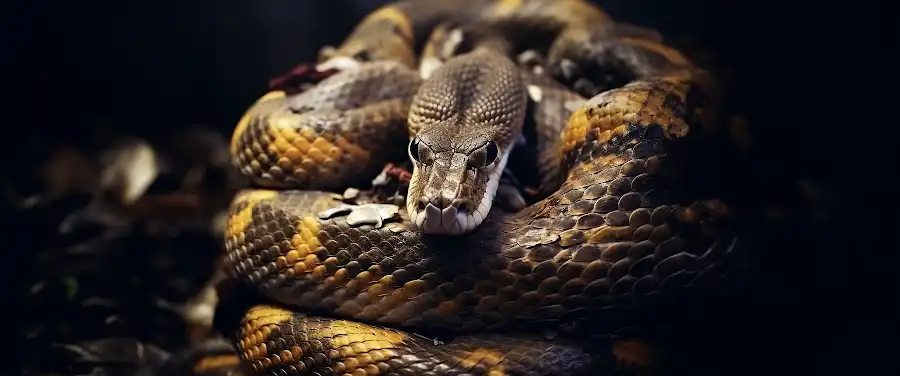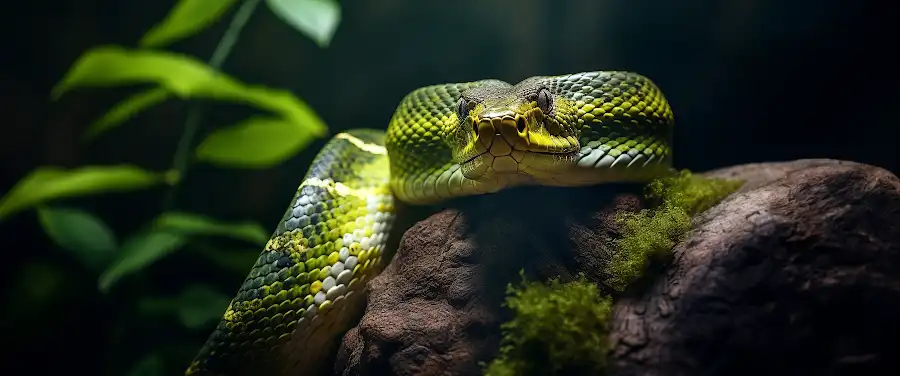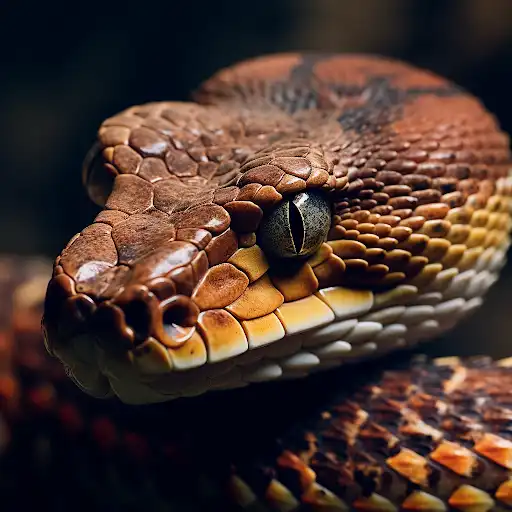
Imagine a warm, sunny day and you’re enjoying the great outdoors when suddenly you come across an unexpected, potentially dangerous visitor – a snake. This kind of encounter can be unnerving, to say the least. Yet, the need for snake removal and control becomes essential, especially when these critters are found in human-inhabited areas. Sure, we might need them away, but this begs some serious questions: How do we handle these creatures without causing harm? What principles guide our actions?
Well, that’s where the intersection of wildlife control and ethical considerations becomes apparent. There’s a pressing need to balance human safety with respect for these often misunderstood creatures. Snakes, despite the fear they inspire, play a significant role in the ecosystem by controlling pest population which could devastate crops or breed diseases. Fact is, snakes aren’t always the villains they’re made out to be. In most cases, the snakes are just as frightened of us as we are of them.
Choosing the right approach toward snake removal is crucial, not just for our sake but also for the well-being of these reptiles. We need a method that’s both ethical and effective. After all, it’s only fair that we respect the lives of these creatures as we take measures to maintain our personal spaces. No doubt, it’s a delicate balancing act, one that demands a thorough understanding of ethics in snake removal and control. Now, let’s dive deeper into what exactly snake removal and control encompasses.
What Ethical Issues Arise in Snake Removal and Control?

When it comes to snake removal and control, one must carefully navigate the terrain of ethical concerns. The balance between human safety and wildlife preservation can be a tightrope walk. As intriguing as snakes may be to herpetologists and reptile lovers, for a good part of the population, these slithering beings can prove to be a source of intense fear or discomfort. The views on the ethics of snake removal, therefore, can vary considerably.
From the perspective of wildlife conservation, some argue that snake removal disrupts the natural order of the ecosystem. Snakes play significant roles in regulating pest populations and maintaining biodiversity. On the other side of the spectrum, human safety emerges as a priority. In populated areas, especially with children or pets, a snake’s presence could pose a potential risk.
How Does Snake Removal Impact The Ecosystem?
Let’s slither into the role snakes play in their ecosystems. By being both predator and prey, snakes contribute to the circle of life in ways more than one. Their removal can potentially upset this equilibrium, thus leading to environmental consequences.
In regions where snake populations have been drastically reduced or eradicated, the impacts have been stark. An unsettling ripple effect manifests in the form of ecological imbalances. For instance, when the number of snakes diminishes, rodent populations tend to increase, which could lead to larger issues like crop destruction and spread of diseases. According to a study by the National Center for Biotechnology Information, such situations clearly underline the importance of snake conservation as an integral part of maintaining healthy ecosystems.
Moreover, the methods used for snake removal can pose ethical concerns. For example, some of the traps or chemicals employed can cause unnecessary suffering or death. The ethical approach should lean towards humane practices, such as safely capturing them and releasing them into secure and suitable wild surroundings.
In essence, the ethics of snake removal and control invites multiple angles of scrutiny. It’s a dance between ensuring the safety of human habitats while preserving our scaly neighbors’ right to lead undisturbed lives. Information and understanding are our crucial allies in this journey.
As we shed the skin of this topic, let’s smoothly transition to understand the laws and regulations around snake removal – another critical aspect that plays a vital role in shaping the ethics of snake removal.
What Are the Laws and Regulations Surrounding Snake Removal?

When it comes to the removal of snakes, wildlife laws play a crucial role in maintaining an ethical equilibrium. These laws, informed by the input of top-notch conservation organizations, and backed by thorough scientific research, serve as guiding principles for both professionals and amateurs alike.
International law protects endangered snake species under the Convention on International Trade in Endangered Species of Wild Fauna and Flora. Meanwhile, local laws often dictate how non-endangered species are handled. For instance, in the U.S., individual states have different rules and regulations regarding wildlife control, and specifically, snake removal. Some states, for instance, allow residents to kill poisonous snakes if they pose an immediate danger, while others forbid it altogether.
These legal implications resonate with the ethical heart of the matter. Laws are designed to ensure that the line between necessary removal for human safety and indiscriminate killing due to fear or loathing does not blur. They preserve the dignity, welfare, and survival of these often misunderstood creatures. Snake removal control is therefore, not just about elimination, but also about awareness, understanding, and cohabitation.
Conservation organizations play an instrumental role in shaping these laws. They advocate for the rights and protection of snakes, increase public awareness about these often misunderstood creatures, and provide valuable resources for snake control and removal. Notable organizations like the International Union for Conservation of Nature (IUCN), the U.S. based National Wildlife Federation and Australia’s Wildlife Preservation Society deeply influence policies regarding snake and general wildlife control.
A proper understanding of these laws is not just a legal responsibility, but also an ethical one. It’s about acknowledging that snakes, like every other life form, have a right to life and a place in the ecosystem.
Here is a brief overview highlighting the differences in snake removal laws across various U.S. states:
| State | Law on Snake Removal |
|---|---|
| California | Killing any reptiles without a permit, including snakes, is illegal. |
| Florida | No law forbids residents from killing snakes; however, certain species are protected. |
| New York | Residents can kill a poisonous snake if it poses a threat, yet protected species can’t be harmed. |
| Texas | Killing non-protected snake species is allowed if they pose a danger. |
Despite snake removal being a regulated activity in most countries, the ethical dimension emphasizes mitigation before confrontation. It’s essential to consider snake-friendly alternatives before resorting to removal.
In conclusion, snake removal and wildlife control laws provide necessary checks and balances. They ensure conservation of species, respect for life, and human safety. In the next section, we’ll delve deeper into the ethical strategies of snake removal, ensuring harmony, and coexistence.
How Can Snake Removal be Done Ethically?

Snake removal and control can often be a complicated subject, predominantly due to the ethical concerns that are involved. People often resort to inhumane practices in their hasty attempts to get rid of these misunderstood creatures. However, with conscientiousness and responsible conduct, snake removal can indeed be done in a humane and ethical manner.
Recommendations for more ethical strategies primarily emphasize minimizing interference and leveraging cruelty-free methods. It’s important to remember that snakes, like all wildlife, play a critical role in our ecosystem. Rather than resorting to harmful and potentially cruel methods of removal, homeowners must consider approaches that respect and protect the serpentine wonders.
One recommended approach is to engage professional wildlife removal services. Experts in the domain, these services understand the sophisticated techniques required to ensure safe and responsible snake removal. According to a study by the US Department of Agriculture, professional services were involved in the effective and ethical removal of wildlife in 70% of reported cases. Their expertise lies in employing gently coercive techniques that encourage snakes to leave without causing them harm.
Professional services also prioritize educating the public about the importance of co-existing with wildlife, including snakes. Reputable organizations, like Humane Society International, offer comprehensive insights and resources to help navigate the ethics of snake removal and control.
What Are Some Examples Of Ethical Snake Removals?
Seeing is believing, and there are numerous real-world examples that highlight humane removal of snakes. For instance, researchers at the Savannah River Ecology Laboratory, USA, adopted a no-kill policy in their snake removal procedures. They use tools such as snake hooks and bag systems, where snakes are gently guided into a bag and later released at a safe distance from human settlements.
Another notable example of ethical snake removal is the Safe Snake Removal Program initiated by the Australian government. This program encourages individuals to call a local professional snake catcher, who then safely captures the snake before releasing it back into a natural habitat that’s safely away from human residences.
The successful outcomes of these instances underscore the effectiveness of such ethical approaches. Not only do they ensure the snakes’ safety, but they also promote peaceful coexistence between humans and wildlife. This harmony is a testament to our responsibility as caretakers of the planet, a role that mandates an ethical, informed, and compassionate approach to wildlife control.
As we delve deeper into the ethics of snake removal, it’s worth considering alternatives to relocation.
Conclusion
It’s been a winding trail through the terrain of ethics in snake removal and control, hasn’t it? We’ve delved into the nitty-gritty and explored how our actions affect these slithering inhabitants of Mother Earth. We’ve understood that human encounters with this wildlife isn’t always a pleasant experience, and sometimes it’s necessary to remove these creatures for safety. But let’s not forget the crucial point we’ve stressed upon: it has to be done responsibly.
Snake removal isn’t about annihilating this species. It’s about striking a balance — ensuring our safety, and theirs; making room for both parties to live harmoniously without invading each other’s territory. So, how do we go about this? By adopting responsible practices which minimize harm, and by educating ourselves and the community about the importance of ethically sound snake removal techniques.
The future of snake removal and control isn’t dark and fraught with conflict. It’s hopeful, with an increasing number of people realizing the importance of ethical methods in wildlife control. It’s a scenario where care and caution are the norm rather than the exception, and cruelty in the name of control is a thing of the past.
Remember, we’re not just guardians of our homes, but also of the Earth and all its creatures. By stepping up and applying what we’ve learned about ethical snake control, we can ensure that our fears and safety concerns don’t translate to unfair treatment of these misunderstood creatures. The choice is ours, and it’s high time we made the right one.
As we wrap up this discussion on the ethics of snake removal and control, let’s take away a critical message: our behavior can and does have significant, sometimes leading to dire, repercussions on wildlife. Let’s strive to be more compassionate, more understanding, and most importantly, more responsible.
| Associated Cost | Associated Cost | Prevention |
|---|---|---|
| Structure Damage | $1,000 – $3,000 | Seal cracks/holes |
| Plumbing Damage | $200 – $5,000 | Regular inspections |
| Electrical Damage | $150 – $350 | Use rodent-resistant materials |
| Disease Transmission | Medical Costs | Maintain cleanliness |




